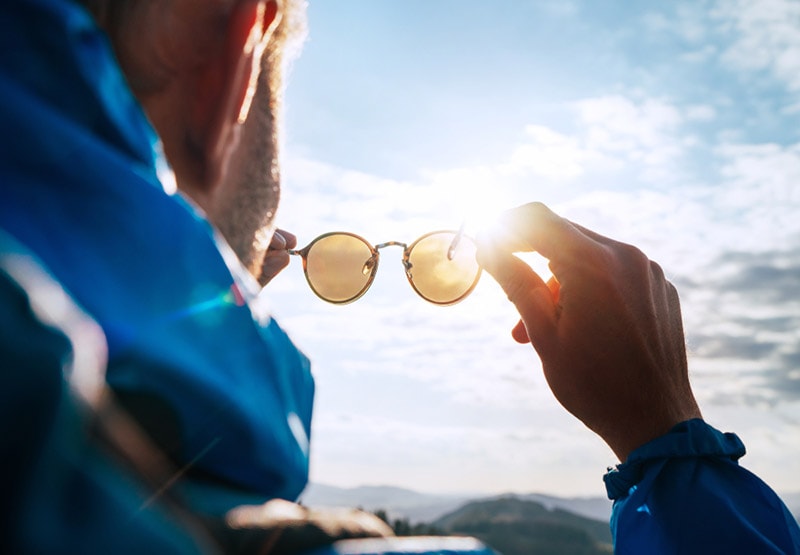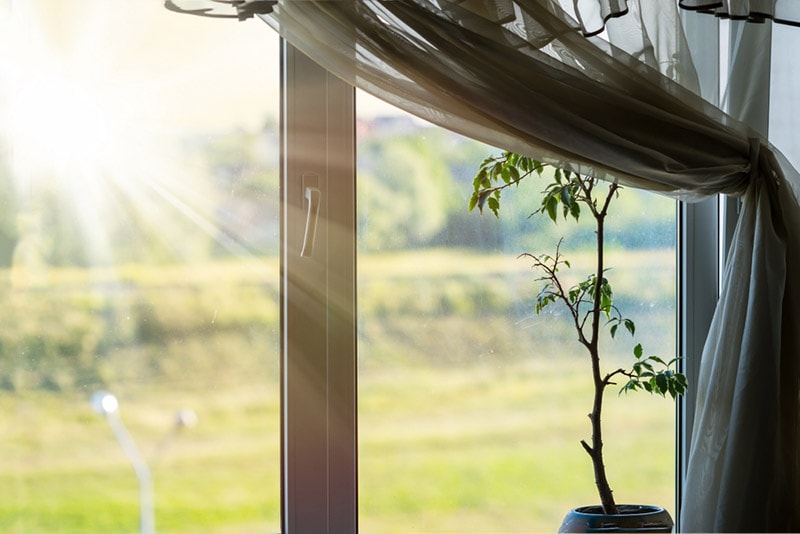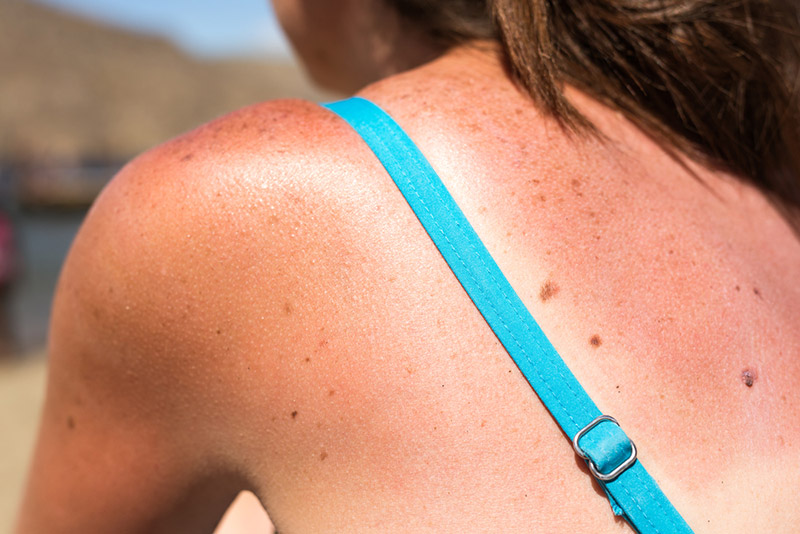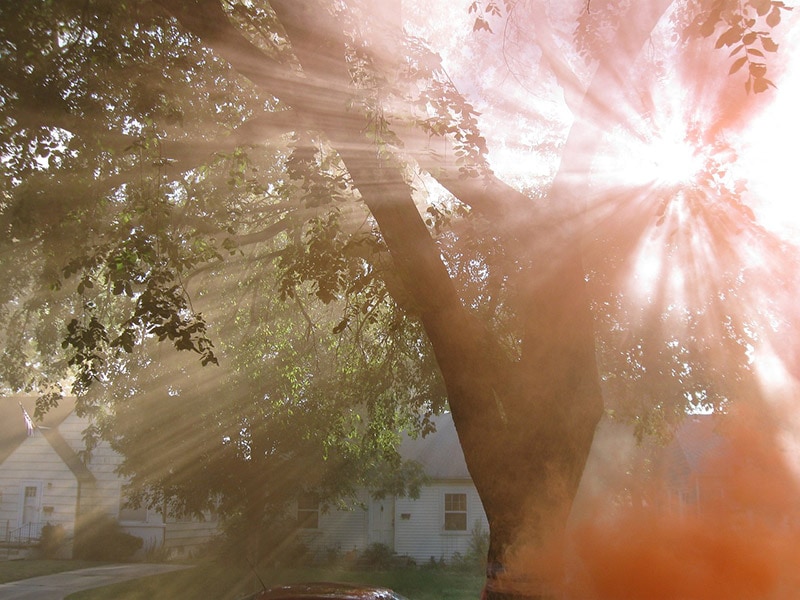15 Crucial Facts About Ultraviolet Rays & the Sun
Last Updated on

Whether you realize it or not, there are ultraviolet (UV) rays all around us, and they can have quite an impact on our lives. The Sun is a full-spectrum UV emitter, which means there’s no escaping them.
That’s why it’s so important to know all about UV rays — to know what they are, what they do, and how you can protect yourself from their adverse side effects!

The 15 Important Facts About Ultraviolet Rays & the Sun
1. There Are Three Types of UV Rays
There are three types of UV rays1: UVA, UVB, and UVC. But while all of three types of rays come from the Sun, Earth’s atmosphere absorbs almost all the UVC rays, leaving only UVA and UVB rays to worry about.
These are two distinctly different types of UV rays, and knowing how they differ from each other is important to adequately protect yourself. It’s also important to ensure that any sunscreens that you purchase and use protect against both types of UV rays.

2. UVA Rays Can Pass Through Window Glass
Being by a window or driving a car doesn’t mean you automatically get protection from UV rays. UVA rays can pass through window glass2 with ease.
So, even if you’re inside, you can’t just assume that you’re safe and protected from UV rays. Take all the necessary precautions.
3. UVB Rays Cannot Pass Through Window Glass
While UVA rays can easily make it through window glass, UVB rays3 can’t. This is good news because UVB rays are more likely to cause sunburns, but UVB rays also help your body make vitamin D, so you’re not getting those health benefits either.

4. 95% of UV Radiation Is UVA
Of the two types of radiation that reach Earth, UVA radiation is far more plentiful. In fact, 95% of the UV radiation that reaches the Earth’s surface is UVA. The other 5% is UVB.
That makes sense because Earth’s atmosphere absorbs about 95% of UVB radiation. That’s good news for us because UVB radiation causes far more negative health effects than UVA.
5. UVC Rays Do Not Reach the Earth’s Surface
While Earth’s atmosphere absorbs about 95% of UVB radiation, it does an even better job with UVC radiation. Unless you head out to space, you don’t have to worry about UVC radiation.
The Earth’s atmosphere completely absorbs UVC radiation, shielding us from any of its harmful effects.

6. One in Five Americans Will Develop Skin Cancer
According to the Centers for Disease Control, skin cancer is the most common type of cancer in the United States. While that’s an alarming enough statistic on its own, when you break that down to raw numbers, it means one in five Americans will develop skin cancer at some point in their lifetime.
Since one of the top causes of skin cancer is UV radiation from the Sun, knowing the risk factors and how to protect yourself from it is important!
7. UVB Rays Cause More Cancer Than UVA Rays
While UVA rays are more common than UVB rays, the latter tend to be more damaging to humans. According to John Hopkins Medicine, UVB rays create a much greater risk for skin cancer than UVA rays. But that doesn’t mean UVA radiation does not carry any risks of its own.

8. UVA Rays Cause More Wrinkles, Aging, and Loss of Skin Elasticity
While UVB radiation is more likely to cause cancer, UVA rays have their own drawbacks. UVA rays cause more wrinkles, skin aging, and loss of skin elasticity than UVB rays.
In short, UVA rays cause most of the visible skin damage outside of tanning and sunburns, but UVB rays cause many of the serious problems associated with UV radiation.
9. UV Rays Are Strongest Between 10 a.m. and 4 p.m.
While you might think that as long as you can see the Sun, you’re getting the same amount of UV rays, but that’s not how it works. The most UV rays are around between the hours between 10 a.m. and 4 p.m., so take extra precautions then.
But just because it’s before or after this time doesn’t mean there’s no UV radiation and you don’t need to take any steps to protect yourself.

10. UV Rays Are Stronger during Spring and Summer
Not only does the time of day affect when UV rays are stronger and potentially more dangerous, but the time of year also plays a major role in this. UV radiation tends to be strongest during summer, followed closely by spring.
Since the season depends on what hemisphere you’re in, the exact month that UV radiation is the strongest changes too. However, the closer you get to the equator, the smaller the impact the season has on the amount of UV radiation.
11. UV Rays Are Stronger Near the Equator
The closer you get to the equator, the stronger the UV radiation is. Moreover, at the equator, it’s stronger throughout most of the year.
The closer you live to the equator, the more vigilant you need to stay about protecting yourself from UV radiation, as you’ll experience more throughout your lifetime compared to people who live closer to the poles.

12. UV Rays Are Stronger at Higher Elevations
The closer you get to the Sun, the more UV radiation you’re around. The Earth’s atmosphere works to absorb and disperse UV radiation.
So, at higher elevations, there’s more UV radiation, which means you need to take even more precautions to keep yourself safe.
13. UV Rays Go through Clouds
While clouds can impact how much UV radiation makes it through, it still has no problem passing through clouds. That’s why the American Cancer Society recommends that you take steps to protect yourself even on cloudy days.

14. UV Rays Bounce off Surfaces
We think of UV rays traveling in a straight line, but they’ll bounce right off reflective surfaces. In fact, some UV radiation will even bounce off something as dark as grass!
Therefore, you need to take extra precautions if you’re near the water, beach, and snow. These conditions can expose you to even more UV radiation than you would experience on a regular day.
15. As the Ozone Thins, More UV Rays Get Through
Earth’s atmosphere is responsible for absorbing most of the UV radiation from the Sun, and one of the most effective areas of the atmosphere is the ozone layer.
But while the ozone does a great job of absorbing UV radiation, it’s currently thinning. The more the ozone thins, the more UV radiation will come through, which is bad news for all of us.


Conclusion
Now that you know more about UV radiation from the Sun, it’s up to you to take all the necessary precautions to keep yourself safe.
Things like sunscreen, large-brimmed hats, and covering up with more clothing goes a long way in protecting yourself. It might seem like extra work, but your skin and health will thank you for it!
Featured Image Credit: Soloviova Liudmyla, Shutterstock
Table of Contents
- The 15 Important Facts About Ultraviolet Rays & the Sun
- 1. There Are Three Types of UV Rays
- 2. UVA Rays Can Pass Through Window Glass
- 3. UVB Rays Cannot Pass Through Window Glass
- 4. 95% of UV Radiation Is UVA
- 5. UVC Rays Do Not Reach the Earth’s Surface
- 6. One in Five Americans Will Develop Skin Cancer
- 7. UVB Rays Cause More Cancer Than UVA Rays
- 8. UVA Rays Cause More Wrinkles, Aging, and Loss of Skin Elasticity
- 9. UV Rays Are Strongest Between 10 a.m. and 4 p.m.
- 10. UV Rays Are Stronger during Spring and Summer
- 11. UV Rays Are Stronger Near the Equator
- 12. UV Rays Are Stronger at Higher Elevations
- 13. UV Rays Go through Clouds
- 14. UV Rays Bounce off Surfaces
- 15. As the Ozone Thins, More UV Rays Get Through
- Conclusion
About the Author Robert Sparks
Robert’s obsession with all things optical started early in life, when his optician father would bring home prototypes for Robert to play with. Nowadays, Robert is dedicated to helping others find the right optics for their needs. His hobbies include astronomy, astrophysics, and model building. Originally from Newark, NJ, he resides in Santa Fe, New Mexico, where the nighttime skies are filled with glittering stars.
Related Articles:
What Constellation Is Spica In? The Interesting Answer!
10 Interesting Leo Constellation Facts, Myths, and FAQs
15 Interesting Pegasus Constellation Facts, Myths, and FAQs
6 Interesting Sagittarius Constellation Facts, Myths, and FAQs in 2024!
What Are Constellations? Where Did They Come From?
8 Interesting Libra Constellation Facts, Myths, and FAQs
What Is Infrared Radiation? Science-Based Facts & FAQ
Is the Big Dipper a Constellation? Mythology, Facts & FAQs
